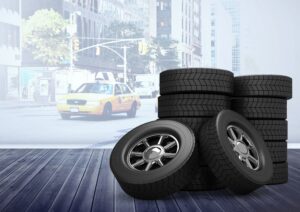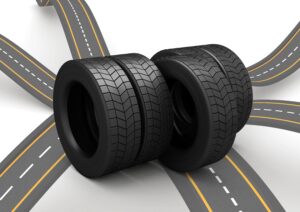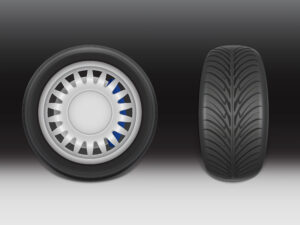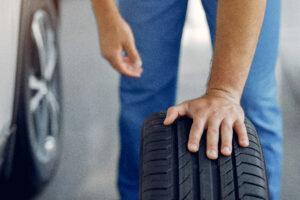XL6 Tyre Pressure – The Ultimate Guide for Safe & Efficient Driving
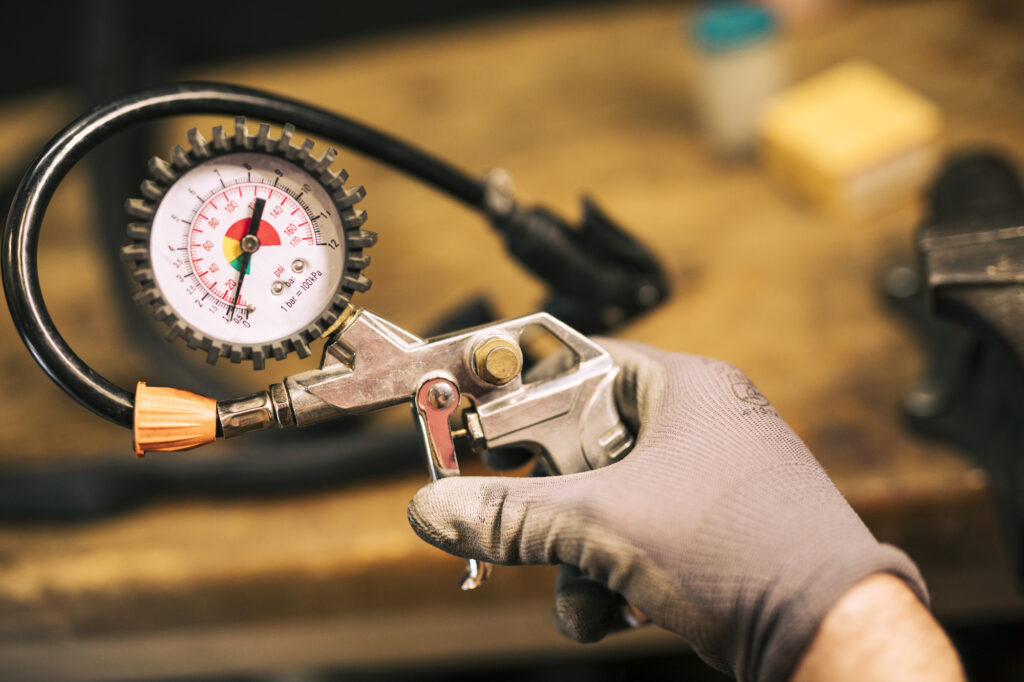
Maintaining the correct XL6 tyre pressure is one of the most important aspects of vehicle maintenance. Properly inflated tyres not only enhance your car’s fuel efficiency and performance but also ensure your safety on the road. Incorrect tyre pressure can lead to poor handling, reduced fuel economy, uneven tyre wear, and even increase the risk of tyre blowouts. To keep your XL6 tyre pressure in check, it is essential to understand the Maruti car tyres recommended pressure and how to adjust it for different driving conditions.
In this comprehensive guide, we will explore everything you need to know about XL6 tyre pressure, how to check and maintain it, and the best tyres to suit your vehicle’s needs. Additionally, we will dive into the importance of the XL6 TPMS (Tyre Pressure Monitoring System) and how it helps in maintaining the proper pressure, along with answering some frequently asked questions. Let’s get started!
Maruti XL6 Recommended Tyre Pressure
To ensure your XL6 performs optimally and remains safe on the road, it’s crucial to follow the Maruti XL6 recommended tyre pressure guidelines. The recommended tyre pressure may vary slightly depending on the variant and the load you are carrying, but here’s a general overview:
- For Petrol Variant: The recommended tyre pressure for the front tyres is 33 PSI, and for the rear tyres, it’s 30 PSI.
- For CNG Variant: For the CNG variant of the XL6, the front and rear tyre pressure should be set to 35 PSI. The higher pressure accounts for the added weight of the CNG system.
Front vs. Rear Tyre Pressure:
Typically, the front tyres of your XL6 require a slightly higher pressure due to the weight distribution of the vehicle, which is most prominent in the front. The rear tyres, however, can have a slightly lower pressure without compromising performance.
City vs. Highway Driving:
- City Driving: For everyday driving within the city, stick to the standard tyre pressures: 33 PSI for front tyres and 30 PSI for rear tyres.
- Highway Driving: For long-distance drives on highways, increasing the tyre pressure by about 2 PSI (i.e., 35 PSI for the front tyres and 32 PSI for the rear tyres) ensures better fuel efficiency and ride comfort.
How to Check and Maintain XL6 Tyre Pressure?
It’s important to regularly check the XL6 tyre pressure to ensure optimal safety and performance. Here’s how you can easily check and maintain your tyre pressure:
- Use a Digital Pressure Gauge: Digital tyre pressure gauges are the most accurate tools to measure tyre pressure. You can purchase one online or find them at most auto shops. Remember to check your tyres when they’re cold, i.e., before you drive the car or at least 3 hours after driving.
- Check Each Tyre Individually: Place the gauge firmly on the valve stem of the tyre. The reading will tell you the current pressure. If the pressure is lower than the recommended XL6 tyre pressure, add air; if it’s too high, release some air until it matches the required level.
- XL6 TPMS (Tyre Pressure Monitoring System): The XL6 TPMS is a built-in system that continuously monitors tyre pressure and alerts you if a tyre is under-inflated or over-inflated. It’s a great tool for keeping track of your XL6 tyre pressure without manual checking.
- Inflate or Deflate as Needed: If the tyre pressure is too low, visit a nearby fuel station or use a portable air compressor to inflate the tyre. If the pressure is too high, release air using a valve tool.
Why Regular Checks Matter:
Regular tyre pressure checks help ensure better safety, longer tyre life, and improved fuel efficiency. Aim to check your tyres at least once a month and before embarking on long trips.
XL6 Tyre Pressure for Long Drives – What You Should Know?
Long drives require more than just checking the basic tyre pressure; you’ll need to adjust the XL6 tyre pressure based on several factors:
- Passenger Load and Cargo Weight:
When carrying extra passengers or heavy cargo, it’s advisable to increase the tyre pressure slightly. If you are traveling with a full load, adjust the front tyre pressure to 35 PSI and the rear to 32 PSI. - Temperature Impact:
- Hot Weather: High temperatures can cause the air inside the tyres to expand, increasing the pressure. Ensure you recheck the tyre pressure more frequently in hot weather to avoid over-inflation.
- Cold Weather: Cold temperatures cause air to contract, lowering the tyre pressure. If you’re driving in colder climates, be sure to check and adjust your XL6 tyre pressure to prevent under-inflation.
- Best Tyre Pressure Setting for Fuel Efficiency:
For long drives, it’s essential to maintain the right tyre pressure to ensure better mileage and smoother rides. Under-inflated tyres increase rolling resistance, leading to higher fuel consumption. For long trips, it’s best to keep your front tyres at 35 PSI and rear tyres at 32 PSI.
Best Tyres for XL6 – Which One Should You Choose?
Selecting the right tyres for your XL6 is crucial for maximizing its performance and efficiency. Here are some of the best tyres for XL6 that can enhance your driving experience:
- Michelin Energy XM2+: Known for durability, comfort, and excellent fuel efficiency. Ideal for both city and highway driving.
- Bridgestone Ecopia EP150: Designed to reduce fuel consumption with minimal compromise on grip and safety.
- Goodyear Assurance Duraplus 2: Offers better wet and dry performance and provides a longer tread life.
- Apollo Alnac 4G: Provides a balance between performance and comfort, along with added fuel efficiency.
- Yokohama BluEarth-A AE50: Designed for high performance and stability on highways.
Why Choose Fuel-Efficient Tyres for XL6?
Choosing fuel-efficient tyres for XL6 can help lower your fuel consumption and reduce long-term costs. These tyres are specifically designed to minimize rolling resistance, enhancing both fuel economy and driving comfort.
How XL6 TPMS Helps in Monitoring Tyre Pressure?
The XL6 TPMS (Tyre Pressure Monitoring System) helps keep track of your tyre pressure in real-time. Here’s how it can help:
- Continuous Monitoring: The TPMS constantly checks tyre pressure and alerts you if any tyre is under-inflated or over-inflated. This ensures that you never drive with unsafe tyre pressure.
- Proactive Safety: With regular TPMS alerts, you can address tyre pressure issues before they lead to more significant problems, such as tyre blowouts or uneven tyre wear.
- Complementing Portable Tools: In addition to the XL6 TPMS, you can also use portable tyre inflators and other monitoring tools for extra peace of mind.
Need a Quick Tyre Check or Repair? Visit KwikFix Auto!
If you’re looking for a quick tyre check or need help with tyre pressure maintenance, KwikFix Auto offers on-demand puncture repair, tyre maintenance, and TPMS installation at your location.
We offer services in:
Conclusion
Maintaining the correct XL6 tyre pressure is essential for ensuring safety, optimal performance, and fuel efficiency. By regularly checking your tyres and utilizing the XL6 TPMS, you can avoid costly repairs and improve your overall driving experience. Additionally, investing in fuel-efficient tyres for XL6 will not only improve your mileage but also enhance the comfort and longevity of your tyres.
Frequently Asked Questions
Q1. What is the recommended tyre pressure for XL6?
Ans. The recommended XL6 tyre pressure is 33 PSI for the front tyres and 30 PSI for the rear tyres (for the petrol variant). For the CNG variant, it’s 35 PSI for both front and rear tyres.
Q2. How often should I check the tyre pressure of XL6?
Ans. It’s advisable to check the XL6 tyre pressure at least once a month and before any long trips to ensure optimal performance and safety.
Q3. Does XL6 have a built-in TPMS?
Ans. Yes, the XL6 TPMS (Tyre Pressure Monitoring System) is a built-in feature that alerts drivers when the tyre pressure is either too high or too low.
Q4. Which tyres give the best mileage for XL6?
Ans. Tyres like the Michelin Energy XM2+, Bridgestone Ecopia EP150, and Goodyear Assurance Duraplus 2 offer excellent fuel efficiency and long-lasting performance.
Q5. What happens if my XL6 tyre pressure is too low or too high?
Ans. Low tyre pressure increases rolling resistance, leading to poor fuel efficiency, while high tyre pressure can cause a harsh ride and uneven tyre wear. Both can negatively impact safety and performance.
Q6. How do I know if my XL6 tyre pressure is correct?
Ans. Use a digital pressure gauge or rely on the XL6 TPMS to monitor and ensure that the tyre pressure is within the recommended range.
Q7. Is it safe to drive with low tyre pressure on the XL6?
Ans. No, driving with low tyre pressure can reduce handling, increase tyre wear, and make your vehicle less fuel-efficient. Always ensure your tyres are properly inflated.
Q8. Can XL6 TPMS detect punctures?
Ans. The XL6 TPMS can detect significant pressure drops but may not specifically identify the cause, such as a puncture. Regular tyre inspections are still important.

